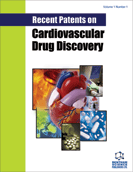Abstract
Contrast echocardiography is a safe, accurate, and reproducible method to assess left ventricular volumes and function. Based on current guidelines, ultrasound contrast is indicated for left ventricular opacification at rest in patients with suboptimal echocardiographic images, and in stress echocardiography when ≥ 2 adjacent segments are poorly visualised. Adding contrast for assessment of regional myocardial perfusion expands the use of echocardiography in ischemic heart disease from detection of left ventricular dysfunction at rest or during stress to assessment of myocardial ischemia, extent of myocardial necrosis and re-flow after coronary revascularisation. Myocardial perfusion also adds prognostic information to that given by structural and functional assessment alone and may reduce the need for more time-consuming, expensive cardiac imaging procedures associated with radiation as well as coronary angiography with the risk of vascular complications. This article gives an overview of ultrasound contrast agents and their impact on echocardiographic assessment of ischemic heart disease also discussing recent patents.
Keywords: Ultrasound contrast agents, left ventricular function, myocardial perfusion, echocardiography, stress echocardiography, ischemic heart disease, myocardial viability, no-reflow phenomenon
 9
9


